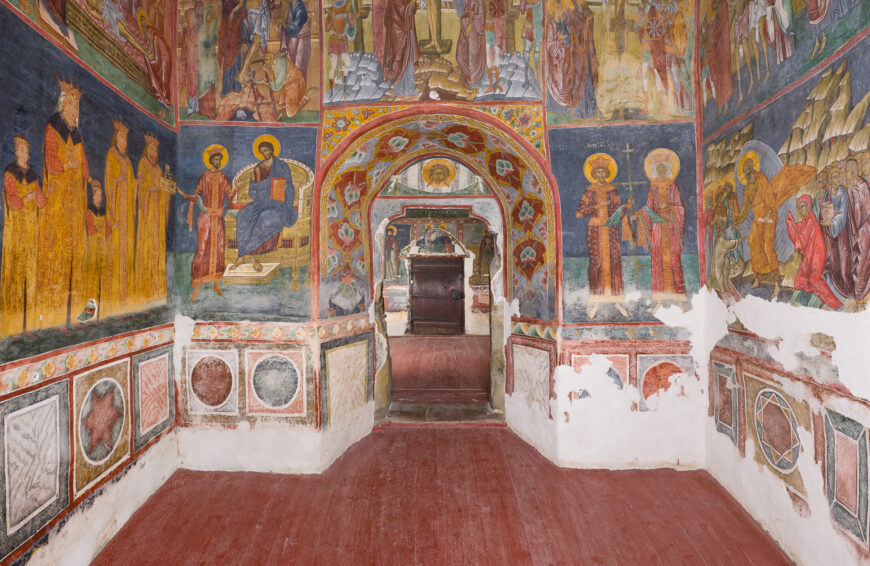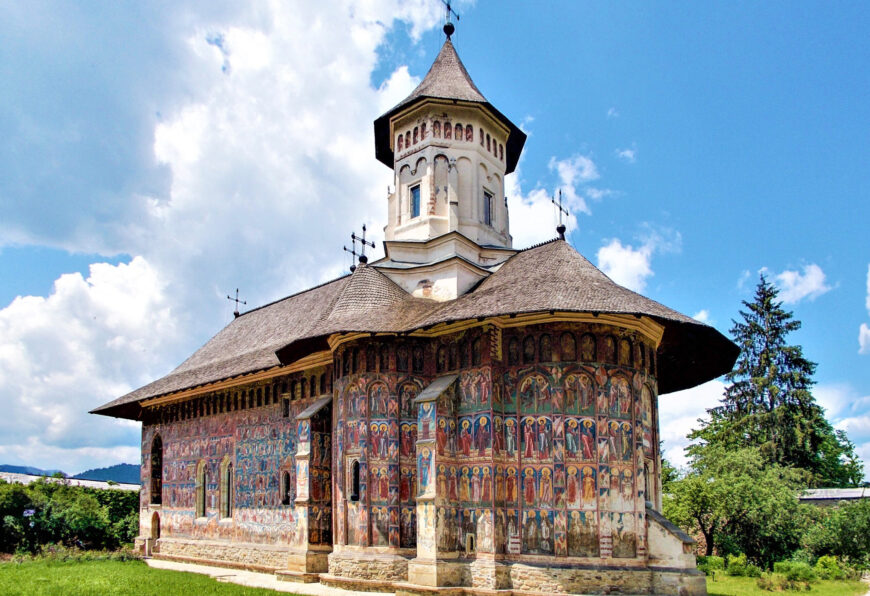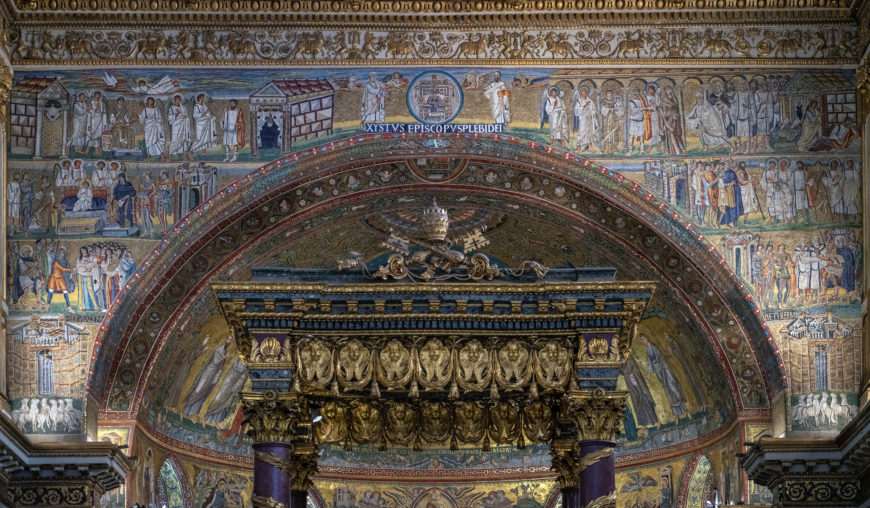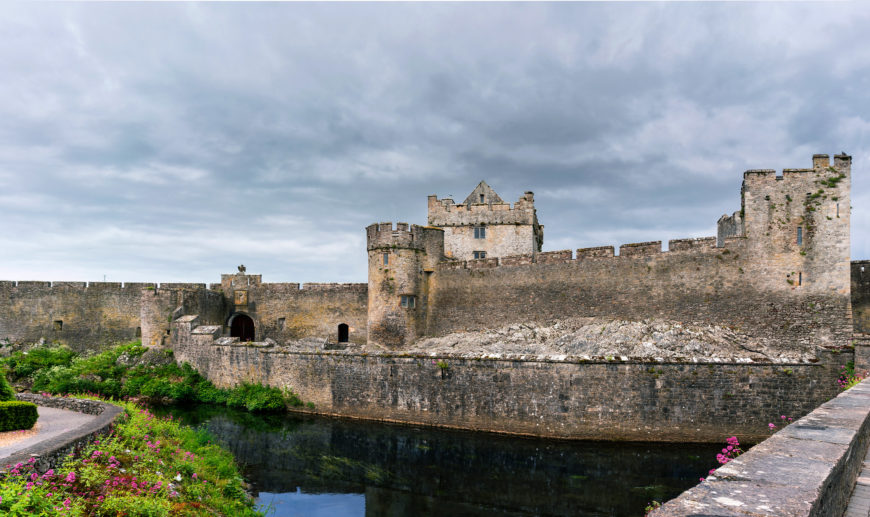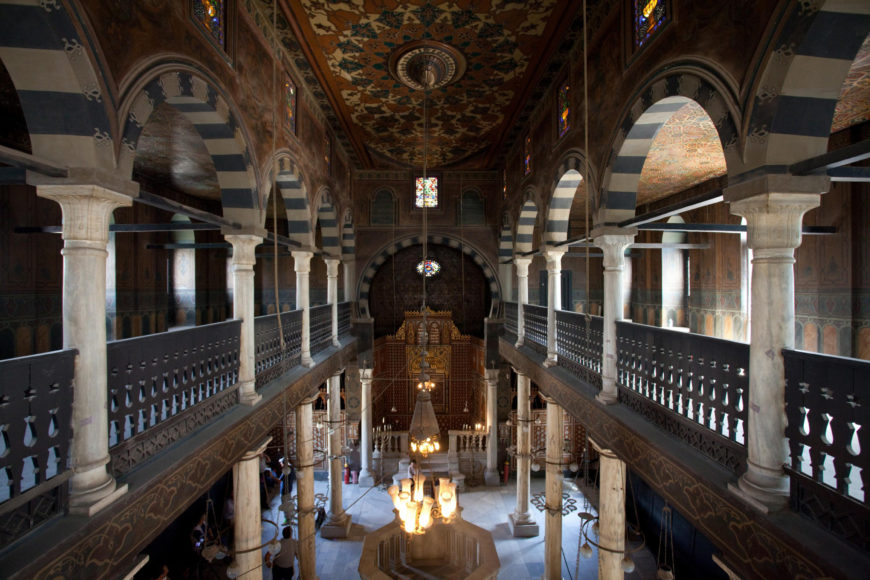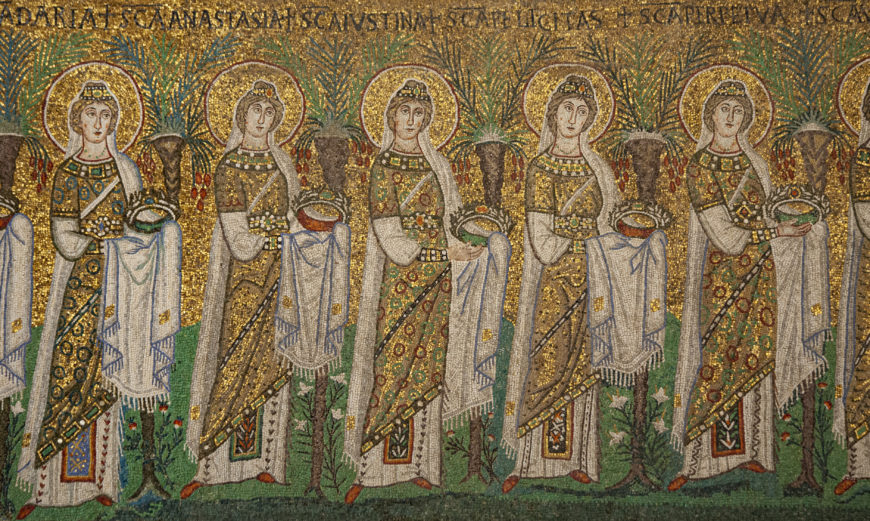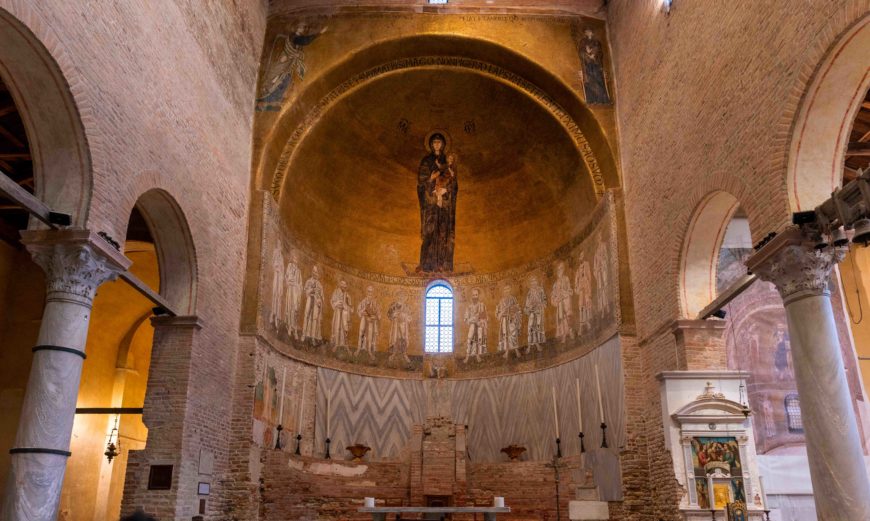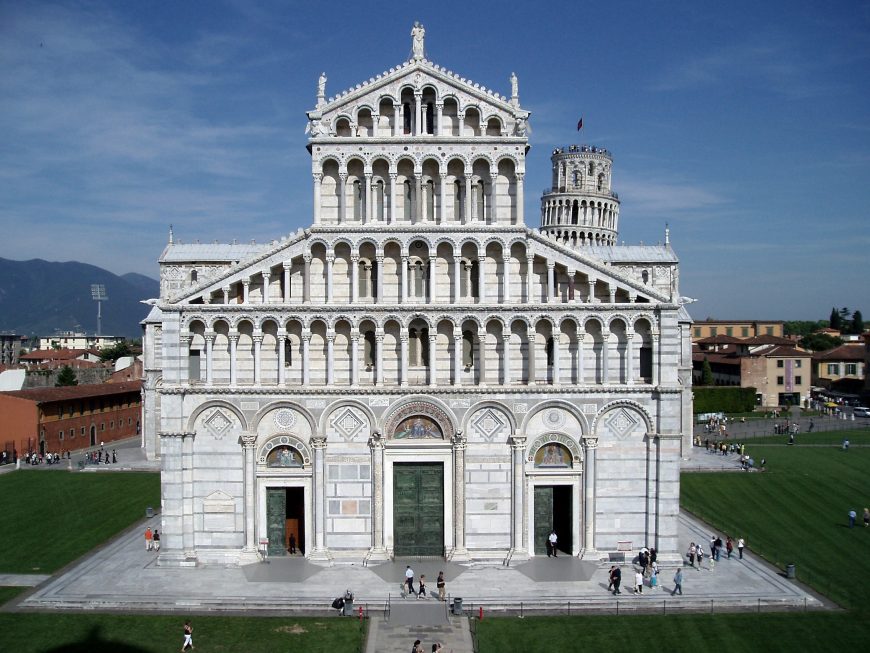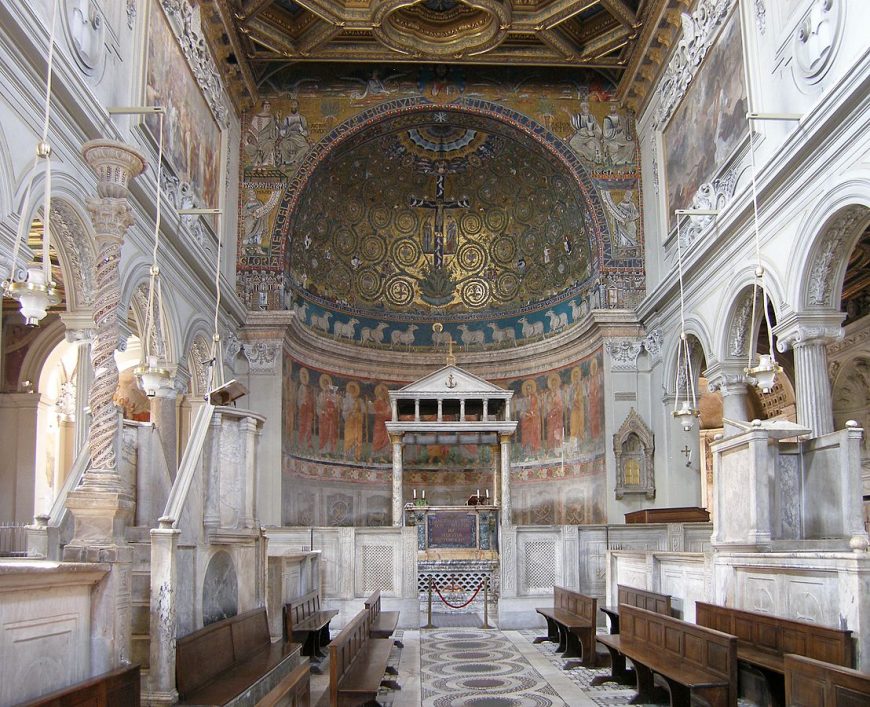A rare example of Carolingian architecture, Lorsch Abbey conveys Charlemagne’s political and religious power.
Lorsch Abbey, Germany, founded in 764. Speakers: Dr. Beth Harris and Dr. Steven Zucker
[music]
0:00:06.2 Dr. Beth Harris: We’re in the town of Lorsch in what is today Germany, and we’re on the site of what once was a very wealthy monastery.
0:00:14.0 Dr. Steven Zucker: The monastery is almost completely gone. What we’re left with is a lovely lawn and the trace of a footprint of the largest building in the monastery, its church.
0:00:24.3 Dr. Beth Harris: But the building that we’ve come to see dates from about 900.
0:00:28.4 Dr. Steven Zucker: At first glance, it looks like a gatehouse.
0:00:30.8 Dr. Beth Harris: Although it was part of this complex of buildings, many of which we know exactly what they did, this particular building remains something of a mystery. But clearly the extensive and beautiful decoration, the stonework that we see was meant to draw attention. This was not a minor building in this complex.
0:00:48.5 Dr. Steven Zucker: And architectural historians are especially fascinated by this building because it is one of the very few that can be linked back to the Carolingian period. That is the empire begun by Charles Martel, by Pepin, and then most famously, expanded by Charlemagne.
0:01:05.1 Dr. Beth Harris: And Charlemagne is not only King of the Franks, he conquers the Lombards in Italy, and in 800 is crowned Emperor by the Pope in Rome.
0:01:13.9 Dr. Steven Zucker: The wealth of the monastery was the result of a discovery by the Bishop of Milan, a man named Saint Ambrose, who uncovered the bodies of what he believed to be two martyred saints. Because of Charlemagne’s political power, he was able to convince the Pope to allow these relics to come into his kingdom. And those relics were eventually brought here, and that brought pilgrims and brought wealth.
0:01:40.0 Dr. Beth Harris: The building that we’re looking at resembles an ancient Roman triumphal arch, because we have these three, grand, round arches framed by attached columns with composite capitals. It’s perhaps not surprising that we see the forms of ancient Roman art here, because one of Charlemagne’s goals was to restore the ancient Roman Empire, which had collapsed in the 5th century.
0:02:05.4 Dr. Steven Zucker: The second story is also trying to replicate the ancient Roman tradition. We can see that in the pilasters. And one of the most classical elements is [the] cornice.
0:02:14.9 Dr. Beth Harris: What’s so eye-catching about this building is not its size, because it’s not particularly large, but its decoration. The stone that it’s made from, which is sandstone of a kind of reddish, brownish hue and a creamy white, is assembled here into different patterns. And this varies from the lower level where it frames the round arches, and then on either side of the capitals where we see alternating diamond shapes. And then above that on the second story, we see hexagons, so this busy façade.
0:02:48.9 Dr. Steven Zucker: There’s another unusual feature to this building, which is these peaked triangles that span those pilasters. And it’s in such contrast to the round arches below, really creating a chevron shape that moves across the surface and activates it.
0:03:03.5 Dr. Beth Harris: What’s really special about this building is that it remains largely intact. We know that the roof line was originally not as steep, and we have two stairwells on either side, one of which collapsed and had to be rebuilt.
0:03:17.7 Dr. Steven Zucker: The thing we want to know most is what its original use was. We don’t know that. What we do know is how the building was reused later.
0:03:25.9 Dr. Beth Harris: It’s really exciting to go inside the second story because there you get a sense of the layers of history. The interior wall was partially made up of ancient Roman stones that were reused.
0:03:40.2 Dr. Steven Zucker: Those stones were plastered over so that the surface was suitable for painting. And we think the interior was painted soon after the building was completed, and depicted an illusionistic loggia that is as if we were in an open-air space looking out. And what’s fascinating is that subject is actually an ancient Roman one, and so another reference to antiquity.
0:04:01.0 Dr. Beth Harris: But then centuries later, this building was used as a church. The lower arches were filled in, and the floor for the second story was eliminated so that the church had a high ceiling, and the original paintings on the walls were covered over. And then on the end walls, we see angels and the coronation of Mary. And on the other wall, a scene of Christ and God the Father, and the Virgin Mary. So, yet another layer of history. The archaeologists who worked on this site have left those different layers for us to see.
0:04:37.2 Dr. Steven Zucker: Fast-forward to the 21st century, and this is a UNESCO World Heritage Site, and we’re surrounded by tourists and by the local citizenry of Lorsch.
0:04:47.4 Dr. Beth Harris: And there’s this presence of Charlemagne, of the Carolingian Empire, of a monastery once visited by pilgrims who were hoping for perhaps a miraculous cure for an illness. And it’s a place that bears the weight of that history.
[music]


